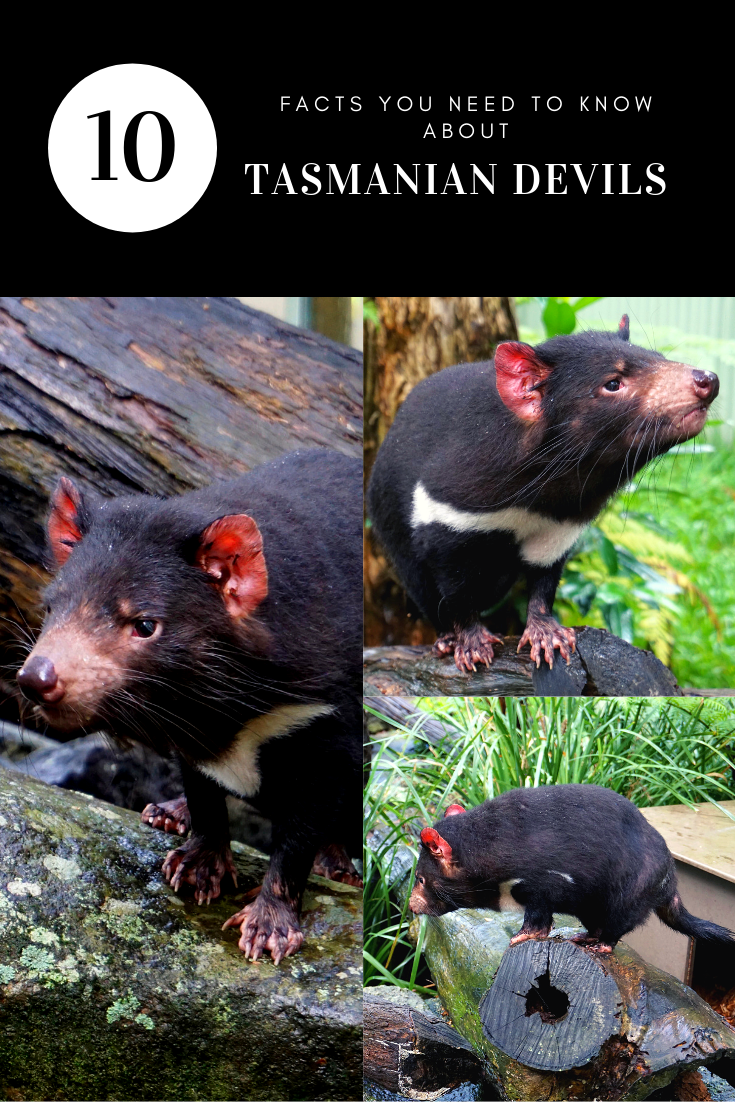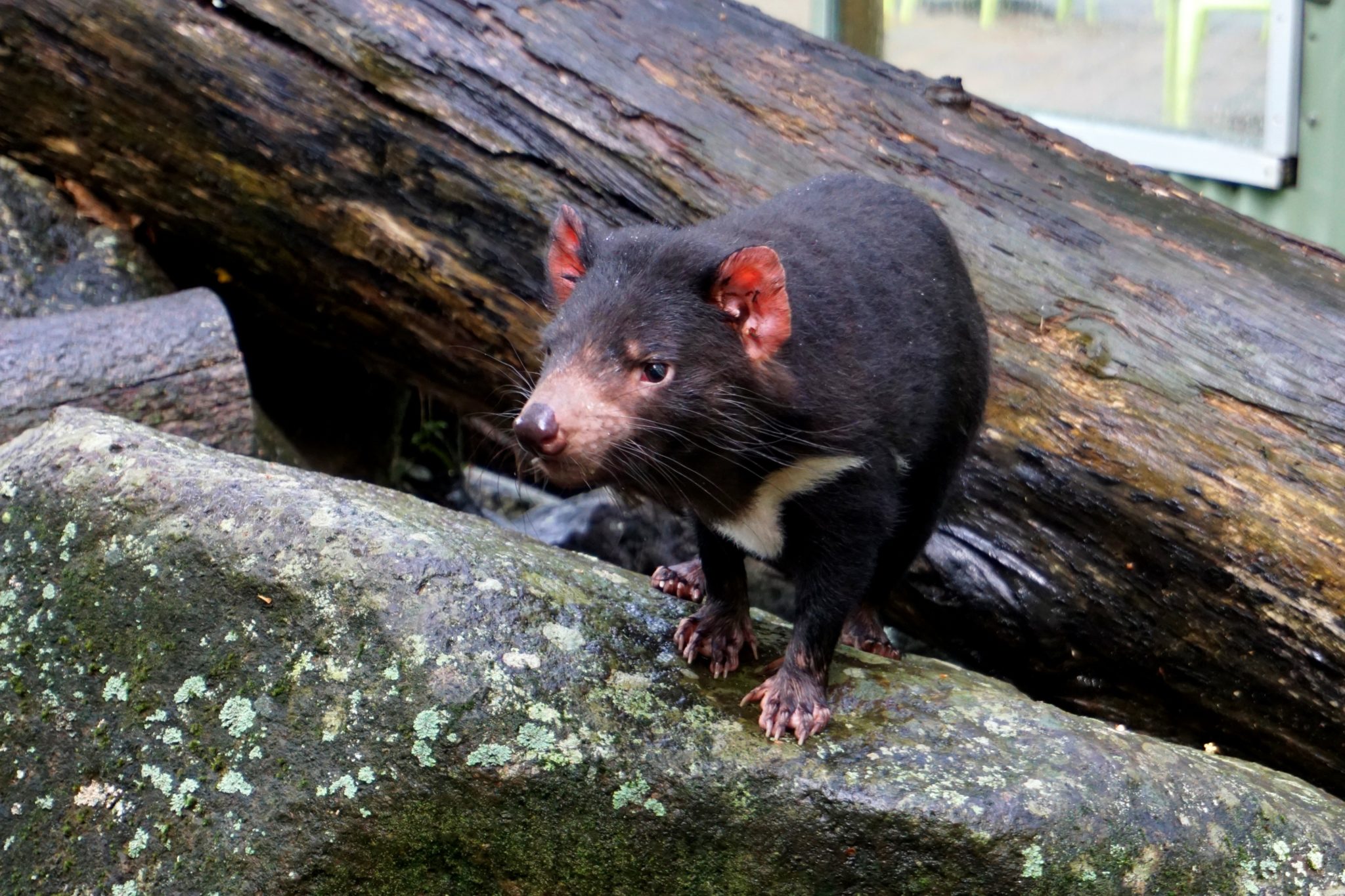If you grew up watching the Looney Tunes, you’ll be familiar with Taz. He’s a Tasmanian Devil cartoon character with little patience and a short temper. I’ve never seen a Tasmanian Devil in real life, so I was stoked to finally see one at Currumbin Wildlife Sanctuary on the Gold Coast in Australia.
Tasmanian Devils are definitely one of the oddest looking animals I’ve ever seen! They are squat build with a disproportionately large head, short legs, and a fat tail. Seeing this unique Aussie animal with my own two eyes inspired me to do read up on Tasmanian Devils. I learned so much about them, for example, did you know that they are the largest carnivorous marsupials in the world? Marsupials give birth to tiny, hairless, and often limbless young. The mother usually has a marsupium or pouch where the young are suckled and carried until they are fully developed. Here are 10 more fascinating Tasmanian Devil facts you need to know.
1. Tasmanian Devils are only found in Tasmania
Sounds obvious right? But 3000 years ago you also found them on mainland Australia. It’s believed that their extinction on the mainland was due to habitat change and competition with dingoes. Today, they only naturally occur in Tasmania.
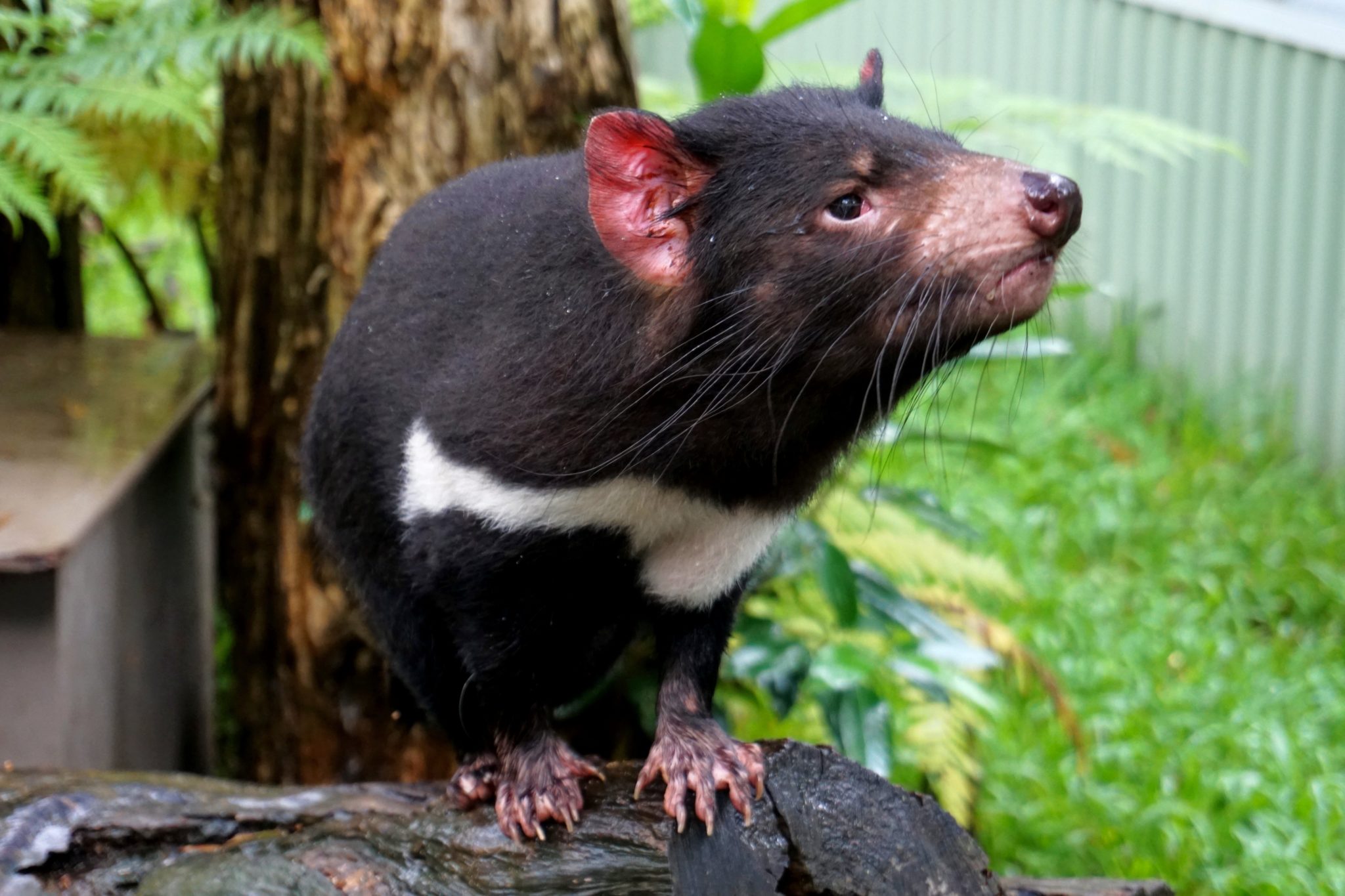
2. Young devils weigh only 0.2 gram at birth
After a gestation period of 21 days, the mother gives birth to 20 to 40 young. Each joey is underdeveloped and the size of a raisin. The mother only has four teats in her pouch, so you do the math. It’s a race for survival from the start! Of the four young that are lucky enough to secure a teat, only two or three will reach adulthood.
3. Young devils are avid tree climbers
Looks can be deceiving…I wouldn’t have guessed that Tasmanian Devils are good tree climbers just by looking at them. But young devils are. Tree climbing gets more difficult as they become older and larger. Devils are good swimmers too.
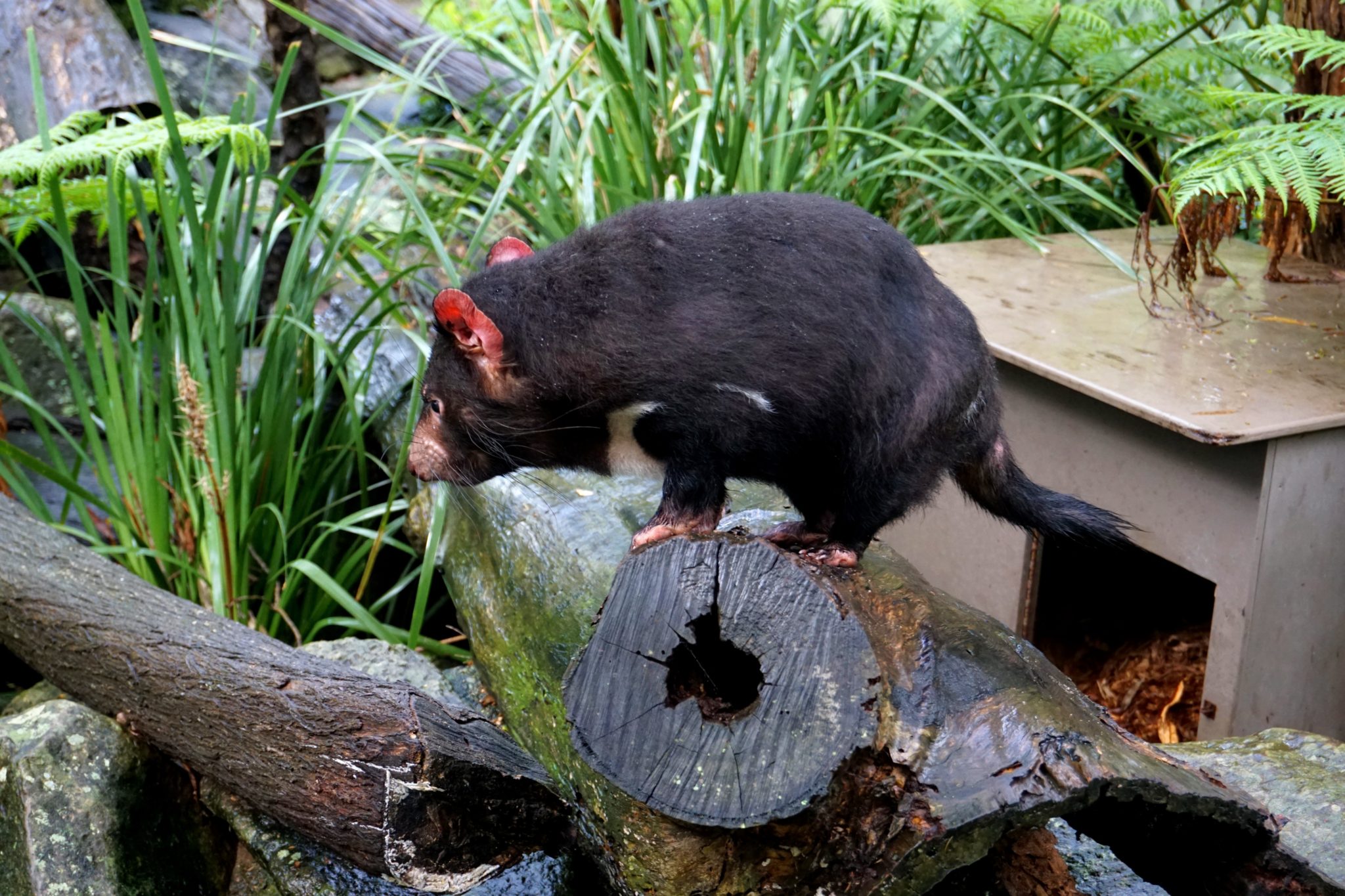
4. Tasmanian Devils are endangered
Tasmanian Devils are listed as endangered on the IUCN’s red list of threatened species. The wild population is estimated to be around 10 000 to 15 000. Why? Carry on reading…
5. DFTD has wiped out 80% of Tasmanian Devils
Devil Facial Tumour Disease (DFTD) is a rare, highly contagious condition or cancer that has killed a lot of Tasmanian Devils. In fact, DFTD has wiped out 80% of the natural population since its detection in the mid-’90s. There are some pretty gruesome photos on the internet if you want to see what an infected devil looks like. Scientists are hard at work studying the disease in order to stop it from spreading. Read more about DFTD and the ‘Save the Tasmanian Devil Program’ here.
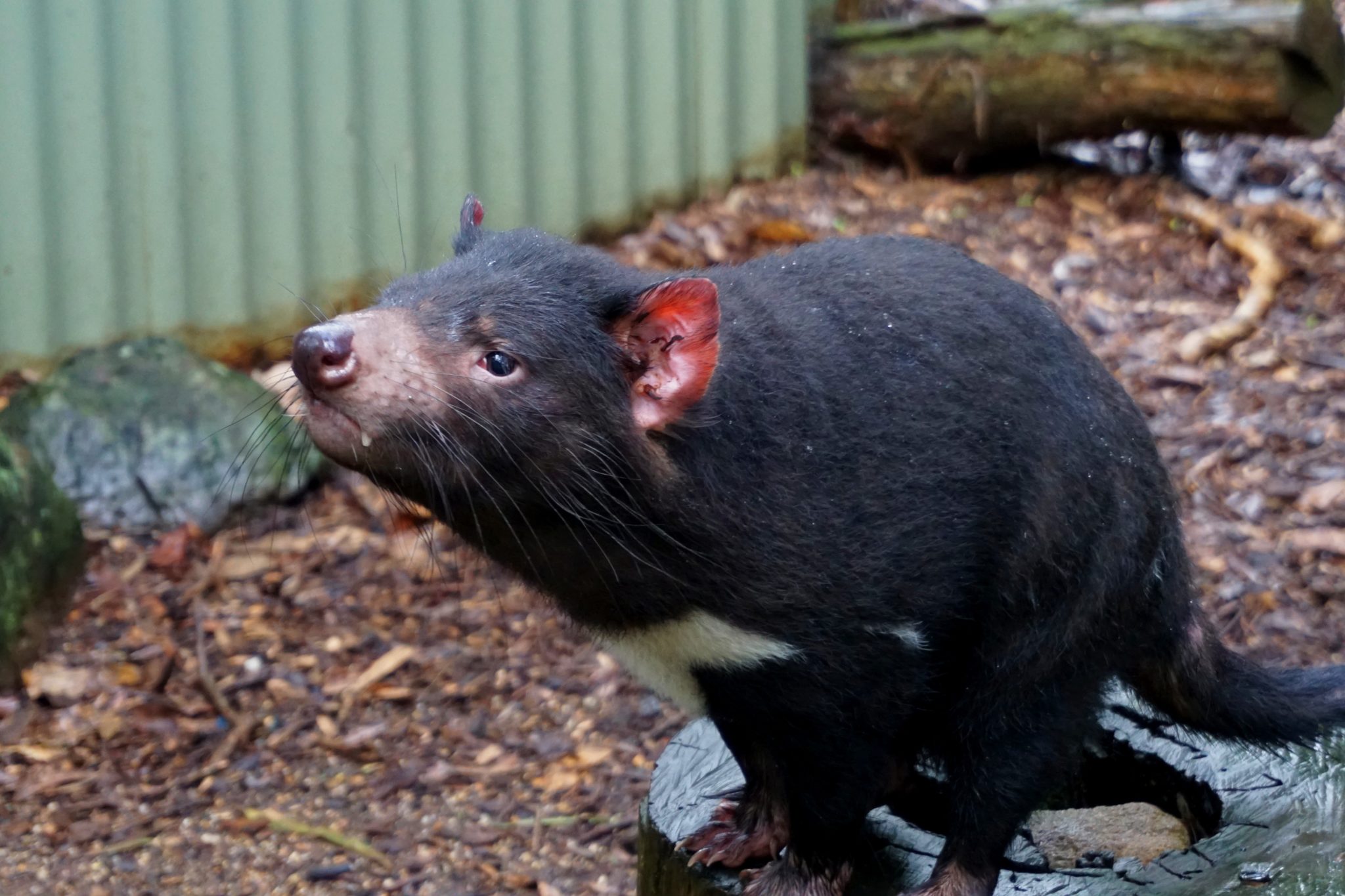
6. Plump tail = healthy devil
Tasmanian Devils store fat in their tails. So if you see a devil with a nice plump tail, it usually indicates a healthy animal.
7. Tasmanian Devils have freakishly powerful jaws
There’s this myth floating around the internet that Tasmanian Devils have the most powerful bite of any animal in the world. Well, that simply isn’t the case. For example, crocodiles have much more powerful jaws. But the Tasmanian Devil has freakishly strong jaws when body size is taken into account. At an average weight of 10 kg, their jaw strength is similar to that of Spotted Hyenas and Bengal Tigers.
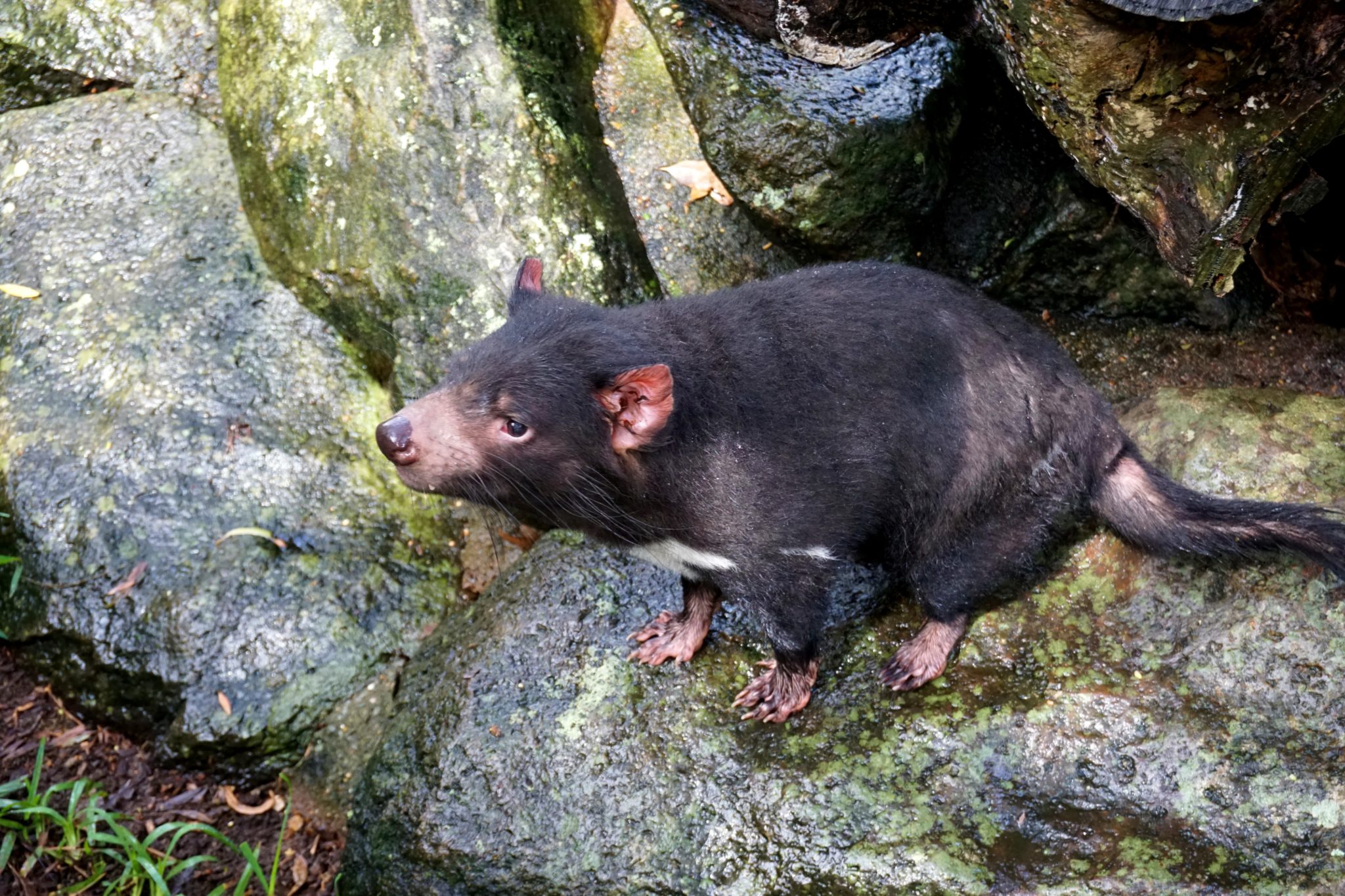
8. They can eat 40% of their body weight in just 30 min
Talk about stuffing your face…Devils normally consume about 15% of their body weight each day. However, they can consume up to 40% of their body weight in just 30 min. That’s crazy! Their diet mostly consists of carrion and occasionally they hunt small prey.
9. Tasmanian devils are cannibals
Yep. Adult devils may eat younger ones if they are hungry. Cannibalism is a common occurrence amongst devils.
10. Their name comes from the sound they make
Google it. Seriously! If you haven’t heard a Tasmanian Devil’s scream, check out a couple of YouTube videos. It’s difficult to describe it: eerie, frightening, unearthly. A disturbing screech. But I’ll tell you what, I’d shit myself if I heard that sound at night alone in the bush. No jokes.
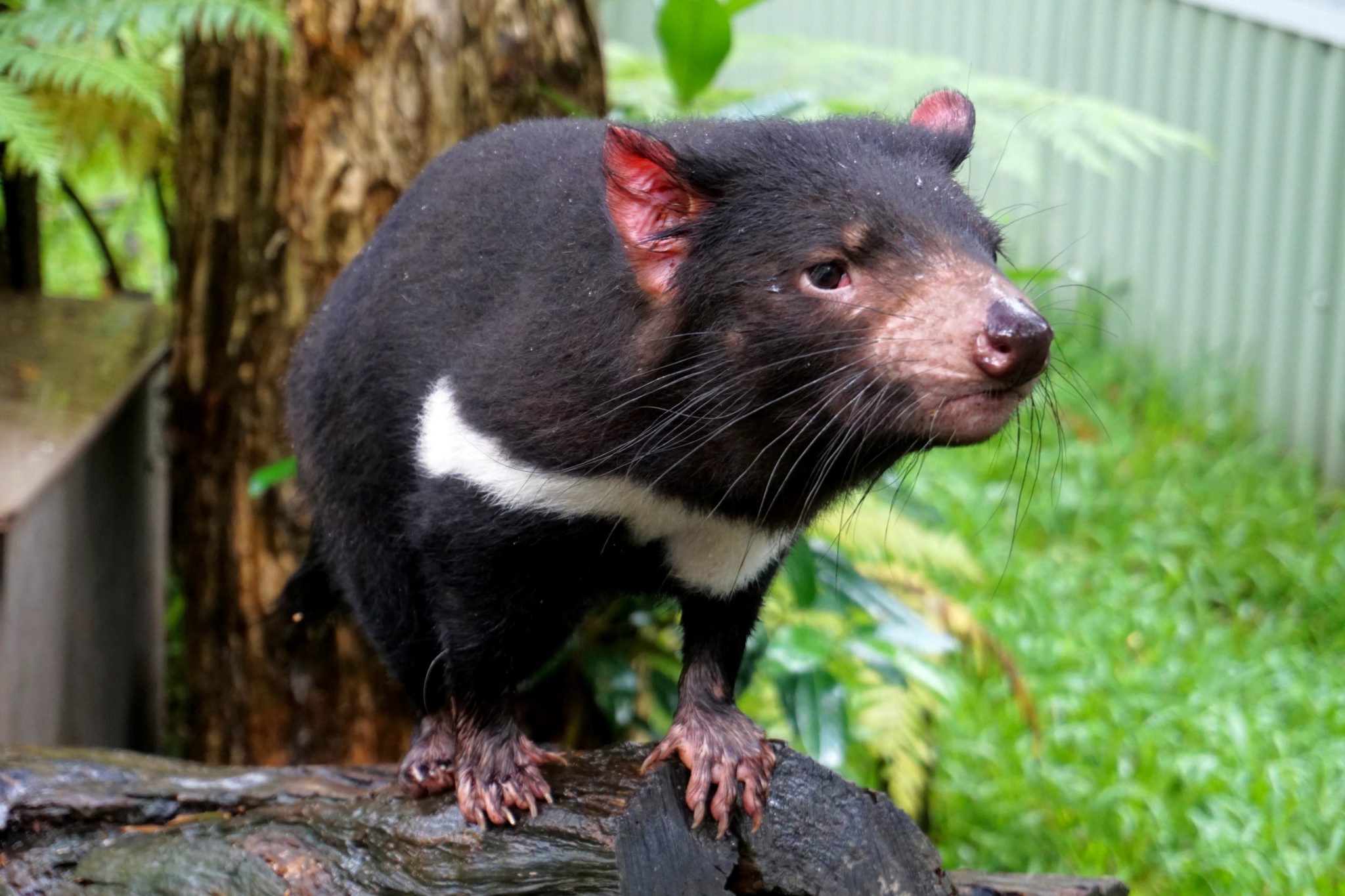
I hope you enjoyed reading this article. This is only the first of many more fascinating Aussie animal articles to come. If you have any questions about Tasmanian Devils, ask away in the comment section. I’ll do my best to answer them.
